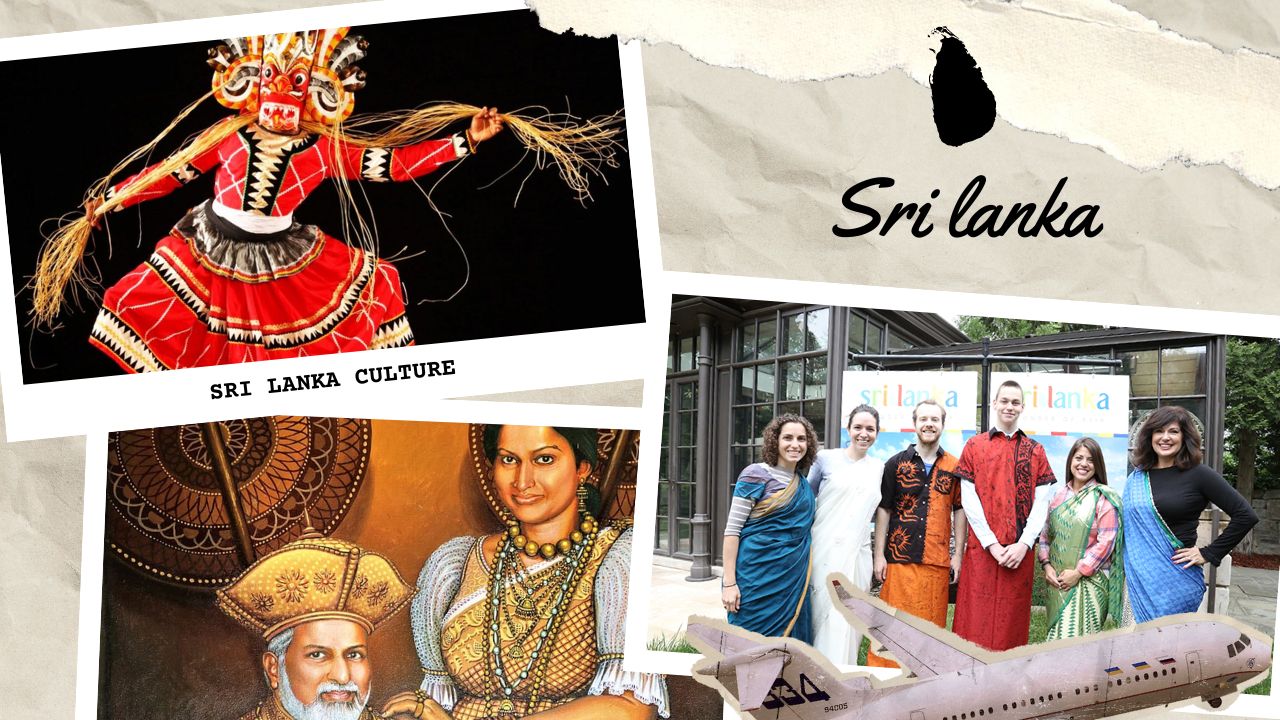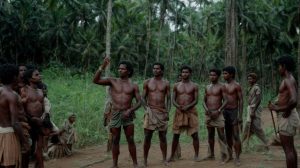Sri Lanka, an island nation teeming with cultural richness and diversity, presents a fascinating blend of traditions, beliefs, and practices. This diversity is a testament to the island’s colorful history and strategic geographical position, which has been a crossroads for various cultures and influences. The essence of Sri Lanka culture is shaped by its,
- Historical Influences: From ancient kingdoms to colonial rule, each era has left an indelible mark on the culture of Sri Lanka. These historical layers contribute to the richness and diversity of the island’s cultural fabric.
- Geographical Diversity: The island’s varied landscapes, from misty highlands to tropical beaches, have fostered distinct regional cultural practices and traditions.
- Ethnic and Religious Mosaic: Home to multiple ethnic groups including the Sinhalese, Tamils, Moors, and Burghers, Sri Lanka boasts a mosaic of cultures. This diversity is further enriched by the presence of major religions such as Buddhism, Hinduism, Islam, and Christianity.
Table of Contents
Historical Background of Sri Lankan Culture
Early History and Influences
Sri Lanka’s culture, known for its regional diversity, has been shaped over millennia by various influences. The heritage of Theravada Buddhism from India has had a profound impact, particularly in the southern and central regions of Sri Lanka. South Indian influences are notably strong in the northern parts of the country.

The ancient traditions and festivals of Sri Lanka, celebrated alongside those of its minority groups, contribute to the rich tapestry of its cultural identity. The island’s history dates back over 2,000 years, with early human inhabitants dating back to about 125,000 years ago. The first stone objects in Sri Lanka date back to 500,000 BC. This long history is marked by a blend of indigenous traditions and foreign influences.
Colonial Impact on Culture
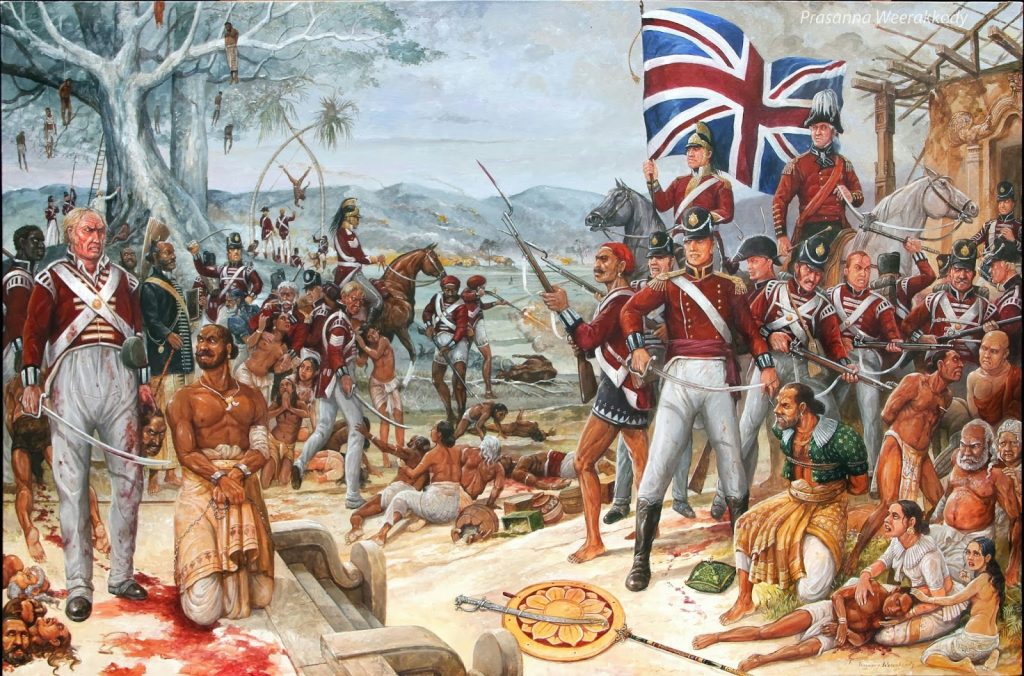
The colonial era left an indelible mark on Sri Lankan culture. The Portuguese, Dutch, and British colonizers introduced elements that intermingled with the traditional aspects of Sri Lankan culture. This period saw the introduction of new architectural styles, arts, crafts, and even changes in cuisine. Portuguese influence is seen in lacework and the introduction of the ukulele and guitars, while Dutch influences are evident in certain culinary practices.
The British impact is noted in the widespread adoption of cricket and certain aspects of Sri Lankan cuisine and education. The colonial period was a time of significant transformation, as these various influences blended with the local culture to create the unique cultural landscape that Sri Lanka is known for today.
Ethnic and Linguistic Diversity in Sri Lanka
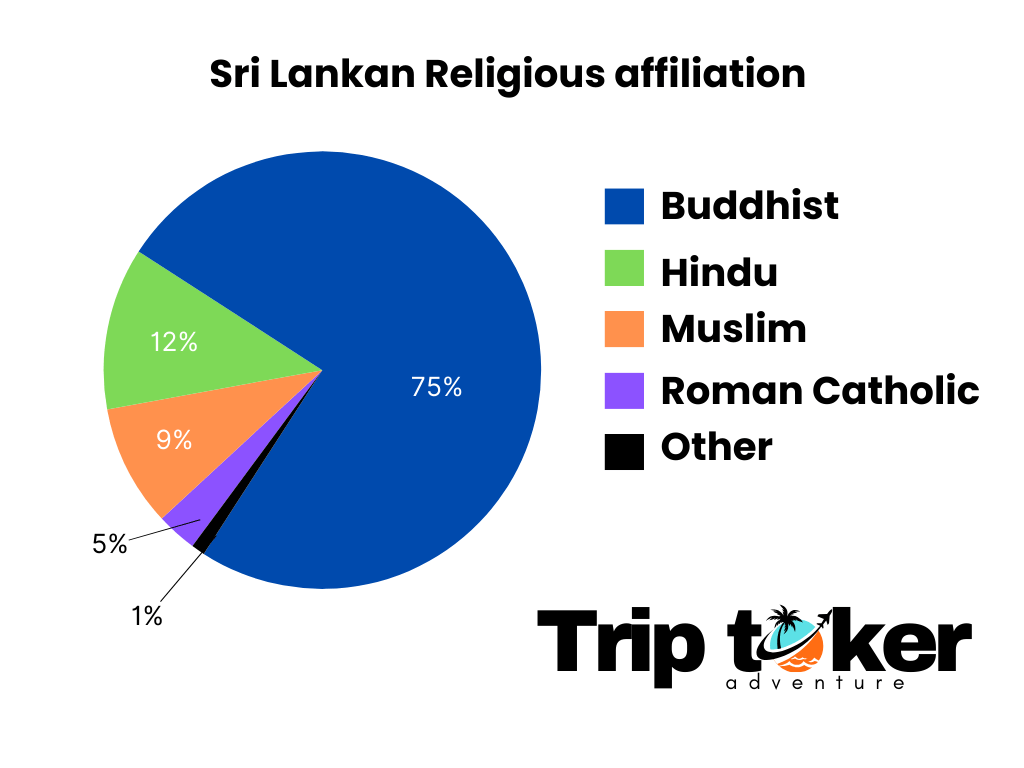
Sri Lanka is a mosaic of ethnic and linguistic diversity, deeply intertwined with its cultural fabric. The Sinhalese, constituting the majority, are predominantly Buddhist, which is the main religion of the country. This Buddhist heritage, passed down from India, has a strong influence in Sri Lanka’s southern and central regions.
Major Ethnic Groups
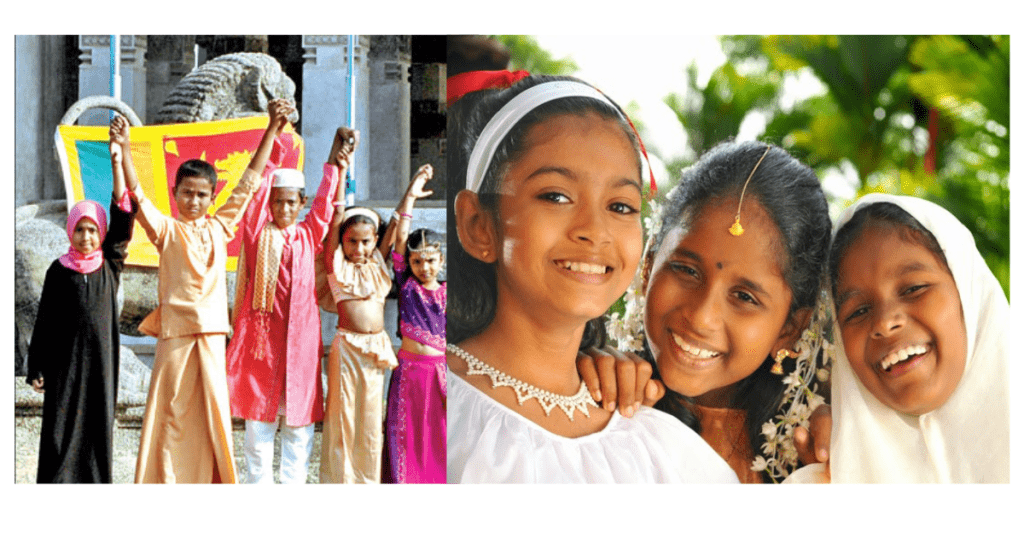
The major ethnic groups in Sri Lanka include the Sinhalese, Tamils, Moors, and others. The Sinhalese form the largest group, with their culture and traditions heavily influencing the national identity.
The Tamils, who are primarily Hindu, are the largest minority and have a significant presence in the northern and eastern parts of the island. The Moors, who are Muslims, along with other smaller groups like the Burghers (of Portuguese and Dutch descent) and the Sri Lankan Malays, add to the ethnic tapestry of the nation.
- Sinhalese: Constituting about 75% of the population, the Sinhalese are the largest ethnic group. Their culture, language, and traditions form a significant part of the national identity.
- Tamils: The Tamils, divided into Sri Lankan Tamils and Indian Tamils, make up about 15% of the population. Their rich traditions and Hindu religious practices add to the cultural mosaic.
- Moors: Descendants of Arab traders, the Moors are predominantly Muslim and contribute to the cultural diversity with their unique customs and practices.
- Others: Including Burghers (descendants of European colonists), Malays, and indigenous Veddahs, each group adds distinct flavors to the Sri Lanka culture.
Official Languages
Reflecting its ethnic diversity, Sri Lanka recognizes Sinhala, Tamil, and English as official languages. Sinhala, spoken by the Sinhalese, is the most widely used language across the island. Tamil, spoken by the Tamil population, is prevalent in the northern and eastern regions. English, a legacy of colonial rule, serves as a link language and is widely used in government, business, and education.
- Sinhala and Tamil: Reflecting the major ethnic groups, Sinhala and Tamil are the official languages, each with its own rich literary tradition.
- English: A legacy of colonial rule, English serves as a link language and is widely used in government, business, and education.
Ethnic Relations and Their Impact on Culture
The interplay of different ethnic groups in Sri Lanka has shaped its cultural landscape. While there have been historical tensions, particularly between the Sinhalese and Tamils, these interactions have also led to a cultural exchange that enriches the country.
Festivals, culinary practices, and artistic expressions often display a blend of influences from various ethnic backgrounds. The Sinhalese New Year and Tamil New Year, for instance, are celebrated with much fanfare across different communities, symbolizing a shared cultural heritage.
- Cultural Exchange: The interaction among different ethnic groups has led to a cultural exchange, influencing cuisine, music, dance, and festivals.
- Challenges and Harmony: While ethnic diversity has posed challenges, it has also led to a harmonious blend of cultures, making Sri Lanka culture a unique tapestry of coexisting traditions.
Religious Beliefs and Practices in Sri Lanka Culture
Sri Lanka culture is deeply rooted in its religious beliefs and practices, with Buddhism playing a central role. The predominant religions in Sri Lanka Culture include Buddhism, Hinduism, Islam, and Christianity, each contributing to the rich cultural tapestry of the nation.
Predominant Religions:
- Buddhism: The majority Sinhalese are predominantly Buddhists, following Theravada Buddhism. This has profoundly influenced the country’s arts, architecture, and societal norms.
- Hinduism: Practiced mainly by the Tamil population, Hinduism in Sri Lanka Culture is characterized by its colorful temples and rituals.
- Islam: The Moors and some segments of the Tamil population practice Islam, contributing to the cultural diversity with their distinct religious practices.
- Christianity: Introduced during colonial times, Christianity is practiced by both the Sinhalese and Tamils, adding another layer to the religious tapestry.
Buddhism and Its Festivals
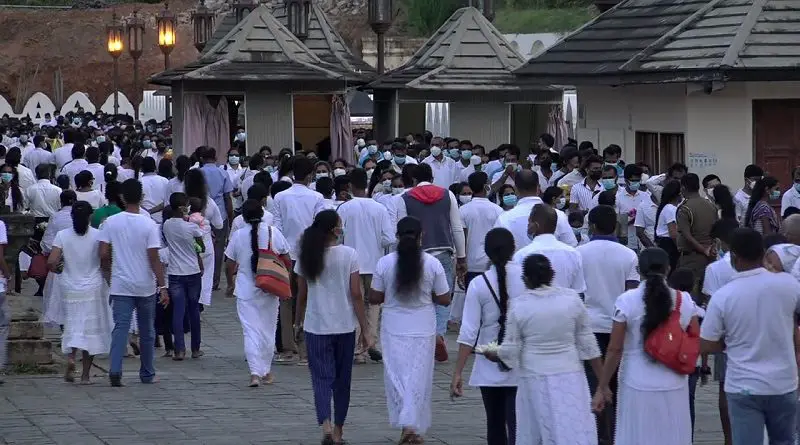
Buddhism, as the main religion in Sri Lanka Culture, profoundly influences the daily life and culture of its people. The Buddhist community observes Poya Days, which are monthly lunar calendar-based holidays. Among the most significant Buddhist festivals is the Wesak Poya Day, marking the birth, enlightenment, and passing away of Gautama Buddha. This festival is celebrated with great fervor, involving religious activities, illuminations, and decorations across the country.
Other Religious Festivals
Hinduism, predominantly practiced by the Tamil population, brings festivals like Deepavali, the festival of lights, and Thai Pongal, a harvest festival. Islam, followed by the Moor and Malay communities, observes festivals such as Eid-ul-Fitr and Eid-ul-Adha, marked by communal prayers and feasting. Christianity, introduced during colonial times, celebrates Christmas and Easter with church services and public festivities.
Influence on Daily Life
Religion in Sri Lanka culture influences various aspects of daily life, from dietary practices to dress codes and social behaviors. Religious festivals, regardless of faith, are often national events celebrated by people of all religions, reflecting the harmonious coexistence and mutual respect among different religious communities in Sri Lanka. This religious diversity not only enriches the Sri Lanka culture but also fosters a sense of unity and national identity among its people.
Art and Architecture in Sri Lanka Culture
Sri Lanka’s culture is richly embodied in its art and architecture, showcasing a blend of traditional and modern styles. This diversity is a testament to the island’s long history and the various influences it has absorbed over time.
Traditional and Modern Sri Lankan Art
Sri Lankan art, deeply rooted in religious and ethnic traditions, presents a wide array of forms ranging from ancient temple paintings to contemporary art. Traditional art is often seen in the form of intricate carvings, batik, and handloom textiles, reflecting the island’s heritage and craftsmanship.
Modern Sri Lankan art, while influenced by traditional motifs, often incorporates more contemporary and abstract elements, showcasing the evolving nature of Sri Lanka’s artistic expression.
- Traditional Art: Encompasses a range of forms from ancient frescoes at Sigiriya to intricate carvings and sculptures in temples, showcasing the influence of Buddhism and Hinduism.
- Modern Art: While rooted in traditional practices, contemporary Sri Lankan art often explores modern themes and techniques, reflecting the country’s evolving cultural landscape.
Architectural Heritage
The architectural heritage of Sri Lanka Culture spans from ancient ruins to modern designs. Ancient architecture, heavily influenced by Buddhism, is exemplified in the magnificent stupas and temple complexes such as those found in Anuradhapura and Polonnaruwa.
The influence of colonialism is evident in the fortresses and churches from the Portuguese, Dutch, and British eras. Contemporary Sri Lankan architecture, while modern in its approach, often incorporates traditional elements and is increasingly environmentally conscious.
- Ancient Ruins to Modern Designs: From the ancient stupas and palaces to colonial fortresses and modern buildings, Sri Lankan architecture tells a story of a rich past and a dynamic present.
- Influence of Religion and Ethnicity: Religious and ethnic influences are evident in architectural styles. Buddhist and Hindu temples, Islamic mosques, and Christian churches each have distinct architectural features that contribute to the diverse Sri Lanka culture.
Influence of Religion and Ethnicity
Religion and ethnicity have profoundly influenced Sri Lankan art and architecture. Buddhist beliefs are reflected in the design of stupas, temples, and monasteries, while Hindu temples showcase Dravidian architectural styles. The ethnic diversity of the island is also mirrored in the variety of artistic expressions, from the Kandyan dance traditions of the Sinhalese to the Hindu temple art of the Tamil community.
Foods
Sri Lanka’s cuisine is a delightful reflection of its cultural diversity and rich history. The island’s culinary practices are deeply influenced by its geography, history, and the cultural mix of its various communities.
Staple Foods and Traditional Meals
- Rice and Curry: The cornerstone of Sri Lankan meals, typically accompanied by a variety of vegetable, meat, and fish curries.
- Traditional Dishes: Include hoppers (a type of pancake), string hoppers, and kottu roti, each offering a unique taste experience.
Rice is the staple food in Sri Lanka, usually consumed daily and forming the base of most meals. It is often served with a variety of spicy curries made from vegetables, meats, or fish. A hallmark of Sri Lankan cuisine is its use of a rich array of spices, which gives the dishes their unique and robust flavors. Traditional meals also include “hoppers” (Aappa/Aappam), which are bowl-shaped pancakes made from fermented rice flour, often accompanied by spicy sambols.
Regional Variations in Cuisine
- The coastal areas, with their abundance of seafood, offer dishes like fish curry, while the central highlands have their own unique preparations of hill country vegetables.
- Spices and cooking methods vary regionally, contributing to the diverse culinary landscape.
Sri Lanka’s regional cuisine varies significantly across the island. Coastal areas, for instance, offer an abundance of seafood dishes, while the hill country’s cooler climate favors the growth of fresh vegetables and fruits, influencing the local cuisine. The northern regions, influenced by South Indian culinary traditions, offer a variety of Tamil dishes.
Food Customs at Ceremonial Occasions
Food plays a central role in Sri Lankan ceremonial occasions and festivals. For instance, during the Sinhalese and Tamil New Year, a special meal called “kiribath” (milk rice) is prepared. This dish, along with sweetmeats like “kokis” and “kavum,” is a staple during celebrations. Religious festivals see the preparation of specific foods as offerings and for communal meals, reflecting the deep interconnection between Sri Lanka’s food practices and its cultural and religious traditions.
Music, Dance, and Entertainment in Sri Lanka Culture
Sri Lanka’s culture is richly infused with music, dance, and various forms of entertainment, each carrying deep cultural significance and reflecting the island’s diverse heritage.
Traditional Music and Dance Forms
Traditional music and dance in Sri Lanka Culture are profoundly influenced by the island’s history and ethnic diversity. The Kandyan dances of the central highlands, associated with the ancient Kandyan kingdom, are particularly notable. These dances, often performed to rhythmic drum beats, are an integral part of religious and ceremonial functions. Another key aspect is the “Baila” music, which has its roots in the Portuguese colonial era and is characterized by lively rhythms and melodies.
Modern Entertainment and Media
Modern entertainment in Sri Lanka encompasses a wide range of media, including cinema, music, and television. Sri Lankan cinema, evolving since the mid-20th century, often reflects social and political themes. The music scene is a blend of traditional and contemporary styles, with local artists both preserving folk traditions and exploring modern genres. Television and radio are also significant sources of entertainment, offering a variety of local and international content.
Cultural Significance of Music and Dance
Music and dance in Sri Lanka are not just forms of entertainment but are deeply embedded in the social fabric and rituals of the island. They play a crucial role in religious festivals, weddings, and community gatherings, serving as a means of expression and cultural continuity. These art forms are a testament to Sri Lanka’s rich cultural heritage and its ability to adapt and evolve while maintaining a strong connection to its past.
Clothing and Fashion in Sri Lanka Culture
- Sari and Kandyan Sari: Traditional wear for women, symbolizing grace and cultural pride.
- Sarong and Kurta: Common traditional attire for men, reflecting the island’s tropical climate and cultural heritage.
Traditional Sri Lankan attire is deeply rooted in the country’s history and cultural identity. For women, the “Kandyan saree” (Osariya) is a popular traditional dress, especially in ceremonial settings. Men often wear a sarong, a fabric wrapped around the waist, and a shirt. These traditional garments are not only a reflection of cultural heritage but also carry symbolic meanings, often associated with social status and regional identity.
Modern fashion in Sri Lanka is a mix of traditional styles and western influences. In urban areas, western-style clothing is quite common, though traditional attire is still worn on special occasions and in rural areas. The fashion industry in Sri Lanka is growing, with local designers blending traditional elements with modern trends to create unique styles.
Regarding the rules for wearing bikinis in Sri Lanka, it’s important to note that while beach areas are generally more liberal, it is advisable to dress modestly when visiting religious sites and rural areas. Sensitivity to local customs and traditions is always appreciated.
Bikini Wearing Rules in Sri Lanka
The topic of wearing bikinis in Sri Lanka, as gathered from top Google search results, reveals a nuanced understanding of cultural and regional differences within the country.
It’s crucial to highlight two specific points for tourists to consider:
Avoid Bikinis on Public Roads
It is important for visitors to understand that while bikinis are acceptable on beaches and within the confines of resorts, wearing them on public roads is not advisable. Public roads and city areas are places where traditional and modest attire is more appropriate, reflecting the country’s cultural norms. Tourists walking around in bikinis on public roads might attract unwanted attention and could be seen as disrespectful to local customs.
Not Suitable for Driving
Similarly, driving while wearing a bikini is also considered inappropriate in Sri Lanka. When traveling outside of beach or resort areas, it’s recommended to wear more conservative clothing. This not only aligns with local cultural expectations but also ensures a comfortable interaction with locals and authorities, should the need arise.
- General Acceptance on Beaches and Resorts: Bikinis are generally acceptable in tourist beaches and resorts, especially in areas like Hikkaduwa, Bentota, and Negombo. However, in city beaches like Galle Face in Colombo, bikinis are less common and not typically worn.
- Cultural Sensitivity in Public Places: It’s important to be culturally sensitive. While there are no laws against wearing bikinis, it’s advisable to avoid them in public beaches where there’s a crowd, as noted on a Reddit thread.
- Tourist-Friendly Beaches: Revealing clothes are generally not accepted in most parts of the country, but wearing a bikini is acceptable at popular tourist beaches.
- Respect for Local Norms: A news report by Fox News highlighted that there were instances where signs were erected warning against “improper” swimwear, but these were later removed by the tourism department, indicating a sensitivity to both local norms and tourist preferences.
- Dress Code in Religious and Rural Areas: In religious places and rural areas, modest dressing is expected. Covering shoulders, knees, and midriff is advised, especially when visiting temples and other religious sites.
Social Customs and Etiquette in Sri Lanka Culture
Sri Lanka’s culture is characterized by a rich tapestry of social customs and etiquette, deeply influenced by its history, religion, and ethnic diversity.
Family Structure and Marriage Customs
- Extended Family System: Predominant in Sri Lanka, emphasizing strong family bonds and support.
- Marriage Practices: Often arranged, with significant emphasis on matching caste, religion, and social status. Traditional ceremonies vary among different ethnic and religious groups.
The family structure in Sri Lanka is traditionally close-knit, with extended families often living together or in close proximity. Arranged marriages were historically common, although love marriages have become increasingly popular. Marriage customs often vary between different ethnic and religious groups, with elaborate ceremonies and rituals. In many cases, these customs reflect the blending of local traditions with religious practices.
Social Etiquette and Practices
- Respect for Elders: A fundamental aspect, with younger people expected to show deference to their elders.
- Hospitality: Sri Lankans are known for their warm hospitality, often going to great lengths to welcome guests.
Respect and politeness are key aspects of social etiquette in Sri Lanka. Greetings are usually formal, with a slight bow or the traditional pressing of palms together in a gesture called “Ayubowan,” symbolizing a wish for long life. It’s common to be offered tea when visiting a Sri Lankan home, a sign of hospitality. Removing shoes before entering a home or a place of worship is a must. Direct confrontation is generally avoided in Sri Lankan culture, with an emphasis on maintaining harmony and face.
Role of Caste and Class in Social Interactions
While the influence of caste has diminished in urban areas and among younger generations, it still plays a role in certain social interactions, particularly in rural communities. The caste system, more pronounced among the Sinhalese and Tamil communities, can influence marriage, occupation, and social interactions. However, modernization and economic development have led to a decrease in the rigid adherence to caste distinctions, with education and financial status becoming more significant in defining social standing.
FAQs
What is the main culture of Sri Lanka?
The main culture of Sri Lanka is predominantly Sinhalese, which forms the largest ethnic group on the island. This culture is deeply intertwined with Buddhism, the major religion practiced by the Sinhalese people. The Sinhalese culture and Buddhism together have significantly shaped the island’s traditions, arts, festivals, and social norms.
This cultural identity is further enriched by the influences of other ethnic groups and religions present in Sri Lanka, such as Hinduism, Islam, and Christianity, as well as the legacies of Portuguese, Dutch, and British colonization. However, the Sinhalese Buddhist culture remains the most influential in shaping the overall cultural landscape of Sri Lanka.
What traditions are celebrated in Sri Lanka?
Sri Lanka celebrates a wide array of traditions and festivals, reflecting the island’s multi-ethnic and multi-religious makeup. Major festivals include:
- Vesak: A Buddhist festival commemorating the birth, enlightenment, and death of Buddha.
- Thai Pongal: A Hindu harvest festival.
- Eid-ul-Fitr: Celebrated by Muslims marking the end of Ramadan.
- Christmas: Celebrated by the Christian community.
- Sinahala and Tamil New Year: A cultural and astrological event marked by both Sinhalese and Tamil people. These traditions are celebrated with various rituals, food, music, and dance, showcasing the vibrant and diverse Sri Lanka culture.
What is the cultural heritage of Sri Lanka?
The cultural heritage of Sri Lanka is a tapestry of ancient civilizations, religious influences, and colonial legacies. This includes:
- Historical Sites: Ancient cities like Anuradhapura and Polonnaruwa, the cave temples of Dambulla, and the fortress of Sigiriya.
- Religious Monuments: Stupas, temples, kovils, and mosques, each with unique architectural styles.
- Intangible Heritage: Traditional crafts, music, dance, and rituals passed down through generations. This rich cultural heritage is a testament to the island’s long history and the resilience and creativity of its people.
What is the way of life in Sri Lanka?
- Community and Family: Strong emphasis on family bonds and community relationships.
- Religion: Plays a significant role in daily life, influencing social norms and practices.
- Agriculture: A significant part of rural life, with rice cultivation being a central activity.
- Urban and Rural Divide: Urban areas, especially Colombo, exhibit a more modern lifestyle, while rural areas are more traditional.
- Hospitality and Social Etiquette: Sri Lankans are known for their hospitality and adherence to social etiquette, which is integral to their way of life. Overall, the way of life in Sri Lanka is a blend of traditional values and modern influences, creating a unique and diverse societal fabric.

